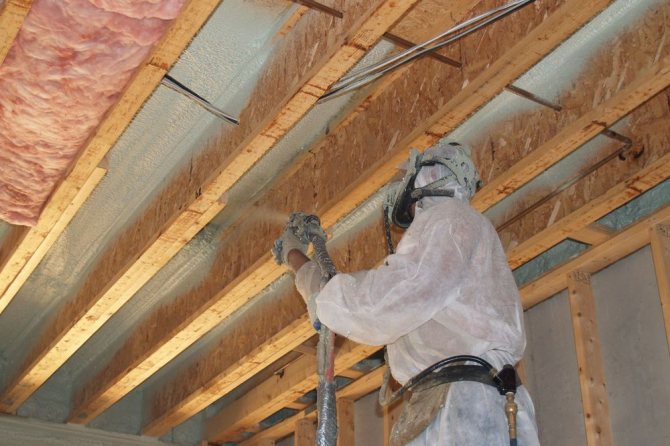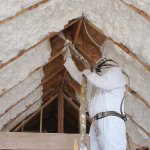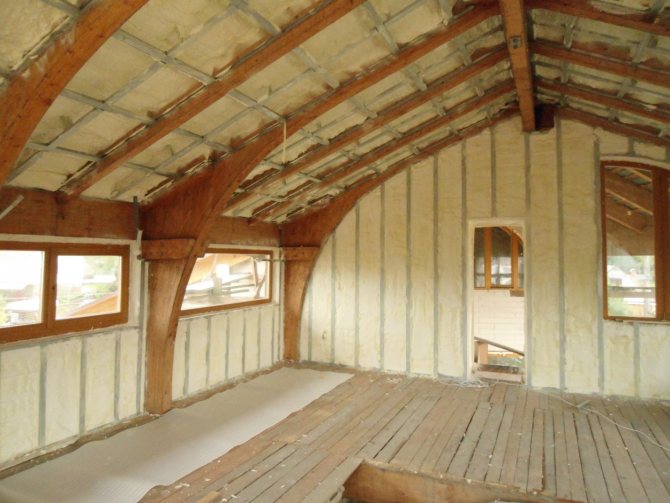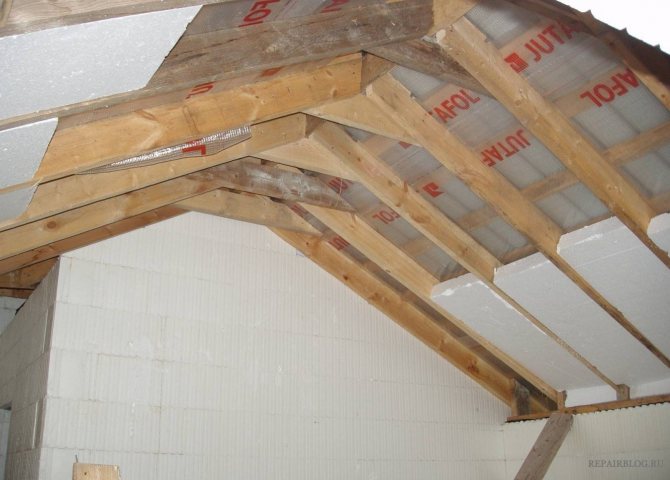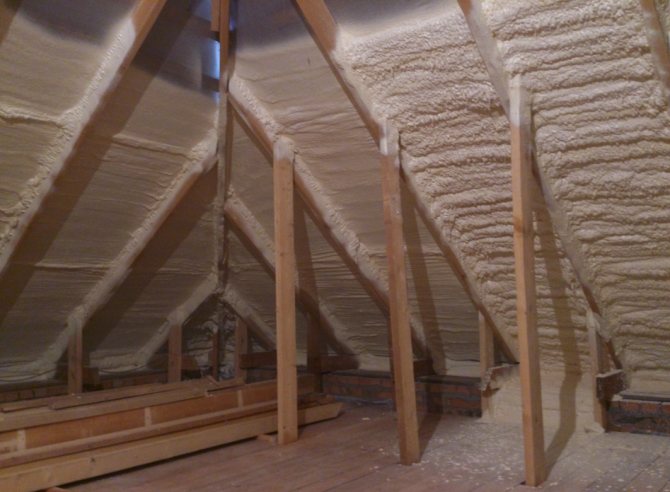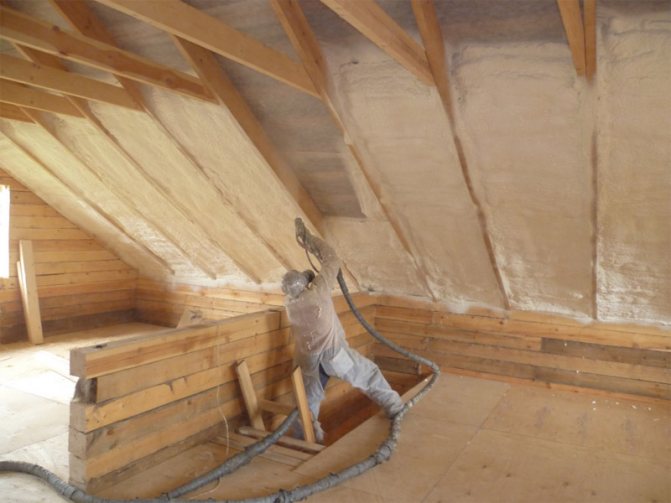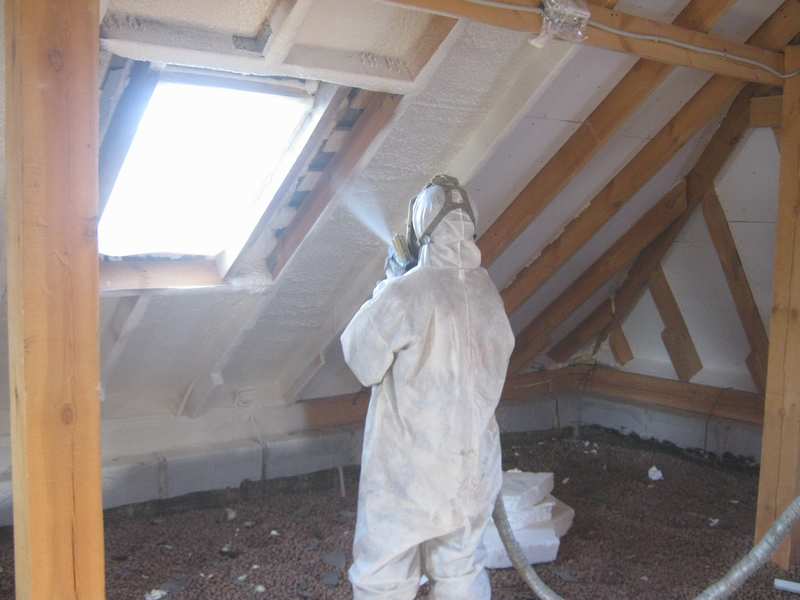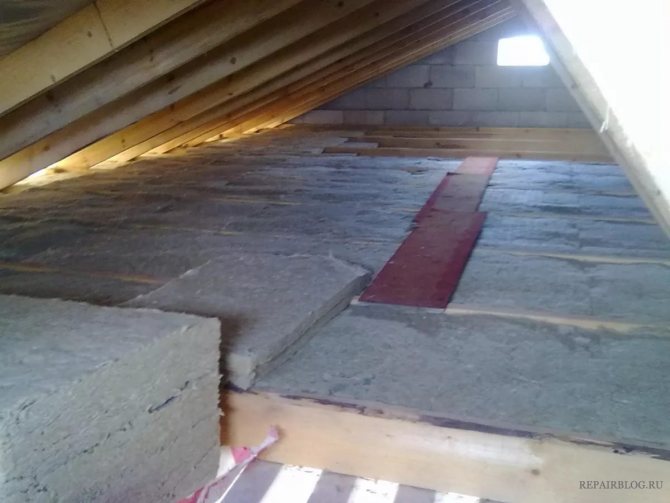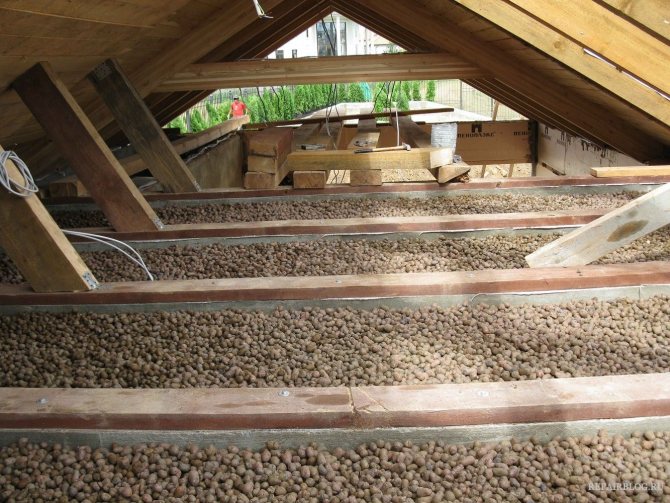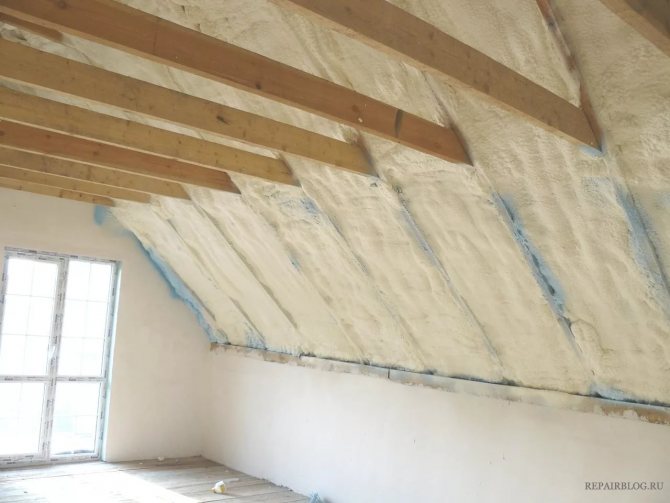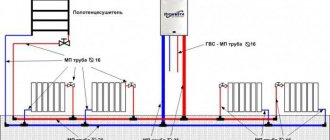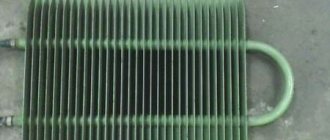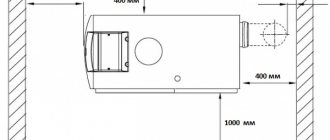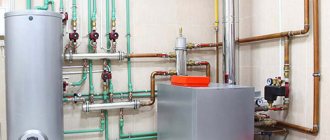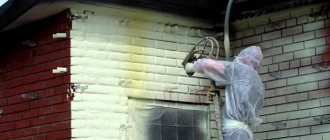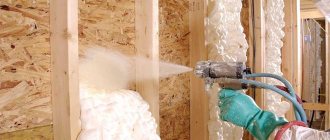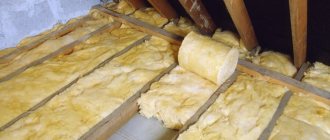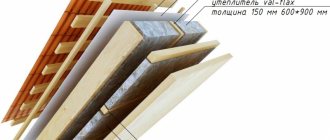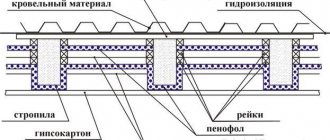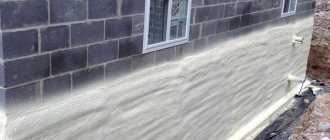Is it possible to insulate the attic PPU
The presence of the attic already indicates that its insulation is required. It is foolish to have a second floor and not use it to expand living space. Even if it is not supposed to live in these rooms in winter, you still cannot do without this procedure. Heat from the lower floor tends upward. If the roof is not insulated, condensation forms when it encounters cold air. The attic will be constantly wet, fungus will appear, and the wooden elements of the rafters will quickly rot.
The properties of polyurethane foam determine the material as an excellent insulation for the attic
With regard to polyurethane foam, we can say that this is an ordinary polyurethane foam, only for such works it is used in large volumes. For the attic, PPU is considered an excellent choice. In a solidified state, the material forms many airtight pores with air, due to which the insulating properties are improved. Cured polyurethane foam is vapor and moisture resistant. He does not need steam and waterproofing. Due to the expansion, the PUF fills all hard-to-reach areas. Foam insulation is considered safe, since the material is environmentally friendly, not inclined to maintain combustion. All of these qualities meet the requirements for attic thermal insulation. It is safe to say that PPU is suitable for work.
A feature of the attic is the complex shape of the roof. The use of rigid slabs is not possible in some areas. Rolled materials slide off the slopes, the mineral wool is caked. A popular option for insulation is laying basalt slabs, but they must be protected from moisture on both sides with membranes. With polyurethane foam, everything is simple. Spray foam on surfaces of any complexity. Even on the fractures of the roof, a single sealed layer is formed.
Important! If the insulation is made with polyurethane foam, the attic stops "breathing". The effect of a thermos is created. Arrangement of ventilation will be required, otherwise dampness will form. 1-2 layers of polyurethane foam on the roof of the attic allows you to save up to 30% heat
In a non-residential attic, it is enough to spray a couple of layers of polyurethane foam, which will already save up to 30% of heat. However, it is important to know that UV foam breaks down. After warming, you will definitely have to fix the finishing sheathing, for example, lining.
Another nuance is the choice of insulation technology. PPU is of three types. Foam differs in hardness: soft, medium and high. The classical technology of insulation is based on the use of PU foam of the same stiffness. Polyurethane foam is sprayed in several layers. In complex technology, several types of foam are used, only the layers are sprayed alternately. Rigid PU foam is always used for the first layer. Its thickness is from 3 to 5 cm. Subsequent layers are sprayed from soft foam. Their thickness varies from 5 to 8 cm.
What is construction polyurethane foam?
Compared to elastic polyol compounds foamed with air and / or carbon dioxide (foam rubber), construction polyurethane foam is a rigid material with a density of 30 - 150 kg / m³. However, it is not rigidity that is the main difference between insulating polyurethane foam and foam rubber, but the structure of its pores. In construction foam, up to 98% of the pores are closed, so the material does not absorb water and conducts heat poorly (due to the gas filling of the chambers - pores).
Polyurethane foam - a new generation of insulation
Polyurethane foam, sold in spray cans, also belongs to insulating polyurethane foams, but the percentage of closed pores is lower (about 80%).In general, the higher this indicator, the higher the energy efficiency of the insulation. Polyurethane foam has the lowest thermal conductivity among all insulators used in construction at the moment. In the best two-component systems, the parameter value does not exceed 0.019 - 0.021 W / m * K. This is 30% less than samples of high-quality extruded polystyrene foam (EPS), in which the coefficient is 0.028 W / m * K.
Polyurethane foam is a material with stable properties. Its characteristics have not changed for many decades. However, it is destroyed by ultraviolet radiation and therefore requires protection from it. The minimum required protection can be achieved with conventional paint.
Pros and cons of foam attic insulation
To find out whether insulation will be beneficial, you need to consider all the subtleties of the technology, identify pitfalls. It should be noted right away that costs are relegated to the background. For the home budget, this is a big minus, but the goal is to reliably insulate the roof of the PPU attic, so it is more important to pay attention to other important factors.
Technology advantages:
- Spraying eliminates the formation of seams. Polyurethane foam fills all cracks, hard-to-reach places. In one piece thermal insulation there are no areas where cold bridges could form.
- Polyurethane foam can be applied to surfaces of any complexity. This is especially important when the attic has a broken roof type.
- High thermal insulation properties of polyurethane foam allow high-quality insulation with a thin layer. Thermal insulation does not steal usable space, leaving more free space inside the attic.
- Thermal insulation by spraying occurs many times faster than the laying of piece material.
- The polyurethane foam adheres firmly to the surface. Moisture and fungus do not form under the insulation. It does not slide down an inclined plane.
Despite the high cost of the technology, PU foam insulation in some cases allows you to save money. There are mansards, the roofs of which were erected with violations. Most often, there is no waterproofing. When using basalt insulation, the membrane will have to be laid. In addition, from the inside of the attic, cotton slabs must be similarly covered with a vapor barrier. High-quality membranes are expensive, plus an additional payment for their installation. Polyurethane foam does not need membrane protection. So the question of the favorable price of each technology remains controversial.
Polyurethane foam fills all voids, reliably adheres to surfaces of any complexity
The disadvantage of this technology is the fear of PPU sun rays. Polyurethane foam is destroyed by ultraviolet radiation. However, insulation with any material ends with a finish, therefore, under the clapboard or drywall, polyurethane foam will last for many years. Firm adhesion to the surface is considered a plus and at the same time a minus. If a roof element requires repair, the section of thermal insulation is stripped off and cannot be reused.
Important! In terms of fire resistance, PPU belongs to the G-2 flammability class.
PU foam does not support combustion, but when exposed to an open source of fire, the foam melts and smokes. The last drawback is the inability to carry out insulation on your own. Spraying is done with special equipment with the involvement of a hired team.
Subtleties of insulation
The slabs are not only attics, but also slabs between floors. The floor is also an overlap. It is often insulated with polyurethane foam. The insulation process has several features in each case.
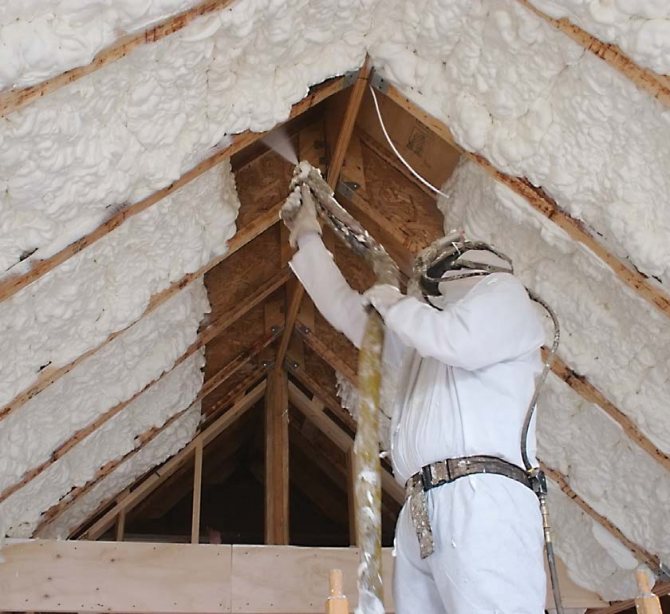
Insulation of the floor of the first floor
This overlap is very important to ensure a comfortable stay in the house. Spraying of the material must be carried out from the underground Lags are handled especially carefully. In these places, the cold penetrates very intensely.After such treatment, a wooden floor will last much longer.
Attention! If you use polyurethane foam to insulate the ceiling, moisture will not rise to the attic.
If you foam only the overlap intervals located between the lags, the temperature will be more than 20 degrees above, and about 5 below. As a result, condensation will begin to form. This is fraught with rotting wooden elements. Therefore, it is better to fill the entire subfloor with PPU. With such a solution, the service life of the floor will be significantly extended.
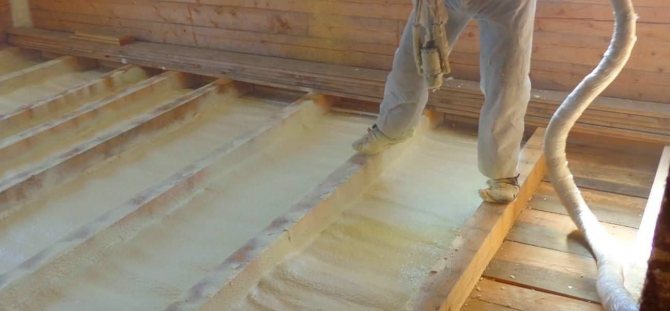

Correct insulation of the attic
To make the temperature in the house as comfortable as possible, it is important to properly insulate the attic. However, you can get a high-quality result only if you follow a few rules:
- With the help of a special regulator, which is located on the gun, it is necessary to set a certain force of material supply.
- The application of polyurethane foam should be started from above. As a result of such actions, a carpet forms in the attic.
- The gaps between the lags must be filled as carefully as possible. This is necessary not only for the purpose of insulating the floor. With such processing, it will be reliably protected.
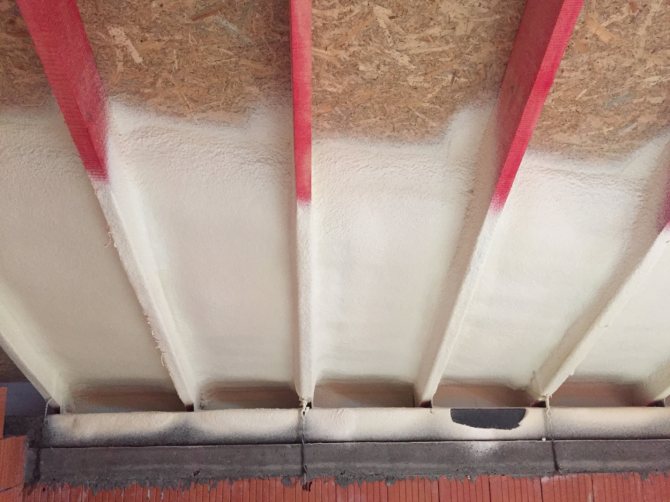

If you follow all these recommendations, the created layer of polyurethane foam will become not only a reliable thermal insulation protection, and will provide the necessary vapor barrier. The slab will be perfectly protected from icing. In addition, moisture build-up can be avoided in this way.
Insulation of reinforced concrete floors
Reinforced concrete slabs are quite in demand when creating various buildings. For this reason, you should know how to insulate floors using polyurethane foam. Spraying is carried out both from below and from above. Such structures are not affected by moisture. Therefore, some protection measures will be superfluous.
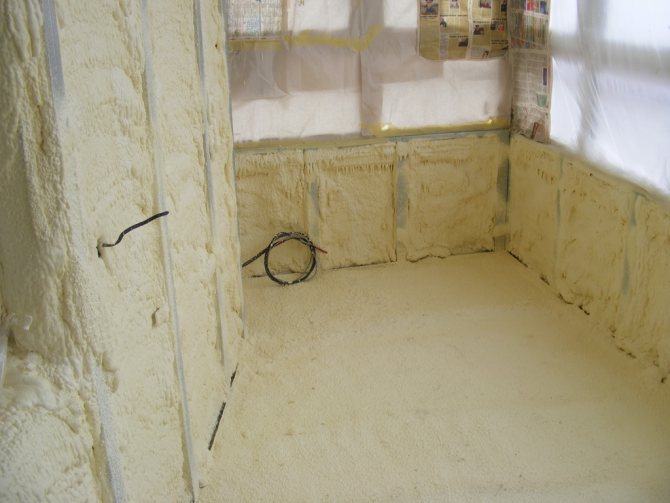

If reinforced concrete structures are insulated using polyurethane foam, thermal insulation loops should be closed. In this case, it should be understood how the thermal insulation is made around the entire perimeter of the building.
When choosing PUF, one should take into account the density of the substance. If reinforced concrete slabs are insulated, a substance with a density of 30 kg per cubic meter should be chosen. In this case, the layer of insulation is able to withstand a load of 20 tons. For ordinary conditions of domestic use, such an indicator is sufficient. If the construction is carried out in a production environment, it is better to choose a PU foam with a higher density.
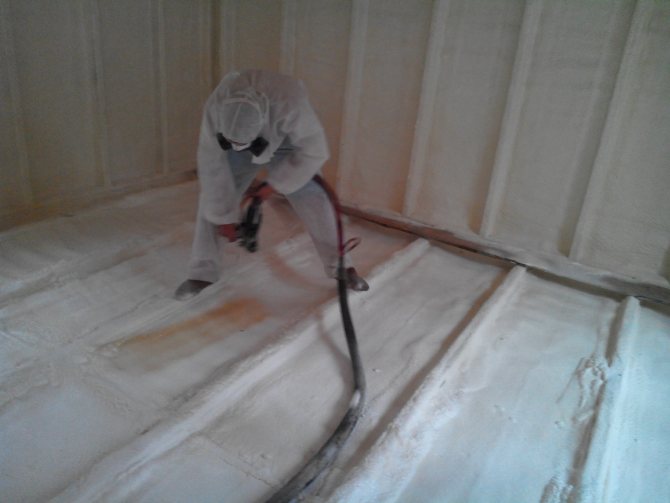

To implement more reliable insulation of floors using polyurethane foam, polyurethane foam should be used, which has a density of about 60 tons per square meter. m.
Additional waterproofing is not required when insulating reinforced concrete slabs with polyurethane foam. Due to the many positive properties of the material, high-quality protection of the structure will be provided.
Attention! When compared with mineral wool, waterproofing is necessarily created for it.
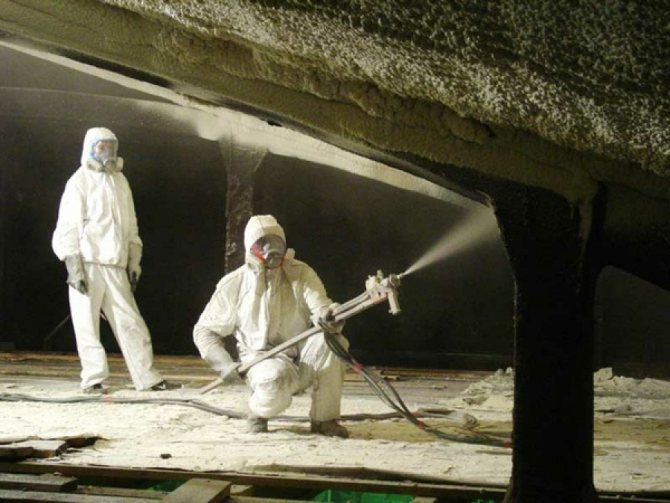

Very often, if it is necessary to insulate a concrete structure, it is polyurethane foam that is used. This is due to the high adhesion of the material. Thanks to this, the material adheres perfectly to the screed.
The main task when insulating reinforced concrete floors using polyurethane foam is to reduce heat loss. It is through the ceilings that the room loses a lot of heat. As a result, the energy efficiency of the heating system is significantly reduced. However, the processing of interfloor slabs provides significant heating savings.
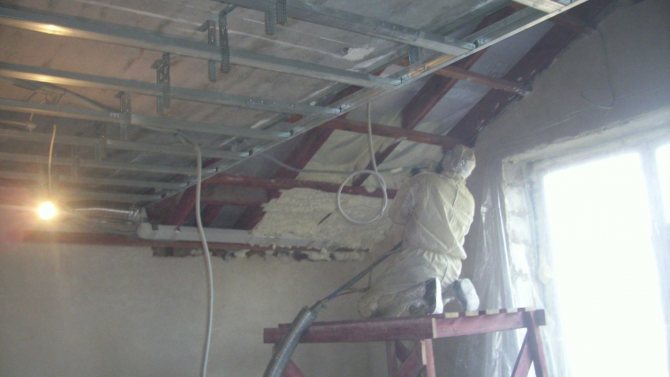

Advice! When using PPU, it is quite easy to hide the communications going along the floor.
How to prepare an attic from the inside for foam insulation
The process of warming begins with preparatory measures. All foreign objects are removed from the attic. First, they will get in the way. Secondly, adhering foam is difficult to remove. Expensive tools, furniture, and other valuable items can be damaged.
Peeling paint and other old finishes are removed before insulating the attic elements.
After clearing the space, they begin to prepare the surface, where the spraying of polyurethane foam is provided. The peeling paint is cleaned off with a spatula. If there is an old insulation, decrepit cladding, everything is dismantled, getting rid of dust. The wooden roof elements are inspected for integrity. Damaged beams are replaced or repaired.
The attic has windows. They are all covered with a film along with window sills and slopes. It is difficult to remove foam that has got on an unprotected area without a trace, so you will have to try with a reliable cover.
How to insulate an attic with polyurethane foam
Polyurethane foam spraying technology is complex and requires the use of special equipment. To insulate the attic in this way, you will have to hire a team of specialists. The purchase of equipment is not profitable for performing the work once. It is another matter if in the future there is a desire to provide paid services for the insulation of building objects.
For spraying polyurethane foam, special equipment is required
In general terms, PU foam insulation provides for the following actions:
- the surface intended for insulation is cleaned of peeling paint, old cladding, thermal insulation and other contaminants;
- in the absence of a lag, they are equipped from a bar;
- the installation for spraying is assembled directly at the work site;
- spray the first layer, give time to harden;
- if necessary, spray a second layer, again give time to harden;
- lathing is attached to the lags or the installation of the finishing plating is carried out directly on them.
Laying under the sheathing of a vapor barrier or waterproofing membrane is not done.
Spraying is performed in a protective overalls, gloves and a mask that completely covers the face
Insulation of the attic of multi-storey buildings
Insulation of an attic in residential and non-residential multi-storey buildings gives about 22% heat savings, therefore, according to Law 261-FZ "On Energy Efficiency", attic spaces are insulated. For this purpose, different materials are used, but the most convenient is polyurethane foam:
- to insulate a large apartment building, you do not need to bring several trucks of insulation - a spraying unit and a couple of containers with components are enough;
- there is no problem with lifting a large amount of material up to the attic. One team of workers with the help of a freight elevator will safely deliver everything you need. When insulating apartment buildings with a low number of storeys, the installation is placed below, and hoses are pulled up to supply the foamed polymer;
- no need to prepare the surface by covering up the cracks. Only very large defects will need to be repaired. The foam, expanding, will close small cracks and cracks;
- it is not required to carry out work on the installation of waterproofing and vapor barrier. Choosing closed-cell polyurethane foam as insulation, you can spray it directly on the floor and side surfaces of the attic;
- work is carried out very quickly. In 2-3 days, the attic of a large multi-apartment building is insulated. At the same time, labor costs are minimal;
- the insulation lasts about 50 years. The long service life eliminates the need to check the condition of the insulation material and carry out its partial replacement;
- after insulation, the management company will be relieved of tenants' complaints about the cold in the premises and high payments for heat energy.
Insulation of the attic these days is not a luxury, but a necessity. Energy prices are growing, and in order not to receive astronomical payments, it is necessary to close the access of cold air to the premises of the house from above. Choosing polyurethane foam as a heater, the work will be done quickly, and the material will last for many years, retaining its properties.
Professional advice
PU foam insulation is considered a complex technology. It is better to trust the work to hired specialists. If you decide to comprehend this "art" on your own, you should heed the advice of professionals:
- When mixing polyurethane foam with water, a 1: 1 ratio is adhered to.
- If the working mixture has darkened, the proportions are not correct. The properties of the insulation will deteriorate.
- When insulating in the middle lane of the attic, the thickness of the polyurethane foam is applied at least 15 cm.
- It is optimal to carry out insulation in warm weather, when the air temperature is above + 10 ° C.
- During spraying, moderate humidity is created in the attic. Excess moisture is not allowed. The insulation is capable of peeling off the surface or hardening with large air bubbles.
- During the operation of the spraying equipment, ventilation is provided in the attic.
- Spray foam from a pistol, moving from the bottom up. The nozzle is removed from the insulated surface at a distance of 50 cm.
- In one pass, a layer of the required thickness is immediately sprayed. It is impossible to return with a pistol to non-frozen areas of the foam.
At the end of the work, the equipment is flushed. If the polyurethane foam accidentally adheres to the body, carefully remove it with a solvent.
What insulation of the attic PPU to choose
An uninsulated attic, in which the temperature is close to the street, creates many problems:
- in summer, hot air accumulates there, raising the temperature in the rooms adjacent to the bottom;
- in winter, cold air tends to descend, and, having gathered in a large mass, falls on the premises, penetrating to the first floor. This can be seen in a thermal imaging survey showing heat loss. The device shows how cold air flows down through the attic. After warming, all these unpleasant phenomena disappear.
There are two options for insulating the floor of a cold attic:
- ventilated, in which only the floor is insulated, and the rest of the surfaces remain cold. In this case, it is necessary to provide ventilation through the air ducts and soffits. This is a cheap option for insulation, in which cold and hot air will not penetrate down, but the temperature inside the attic itself will remain outside;
- unventilated, in which all surfaces of the attic are insulated - from the ridge to the floor, but for such an attic, a ventilation system must be provided. Modern technologies make it possible to install any ventilation system in the house that effectively removes air from all rooms.
If you are faced with the choice of which option to prefer, choose a non-ventilated one. Even if the attic is not planned to be used as a room, such insulation will protect the house from cold and noise.
